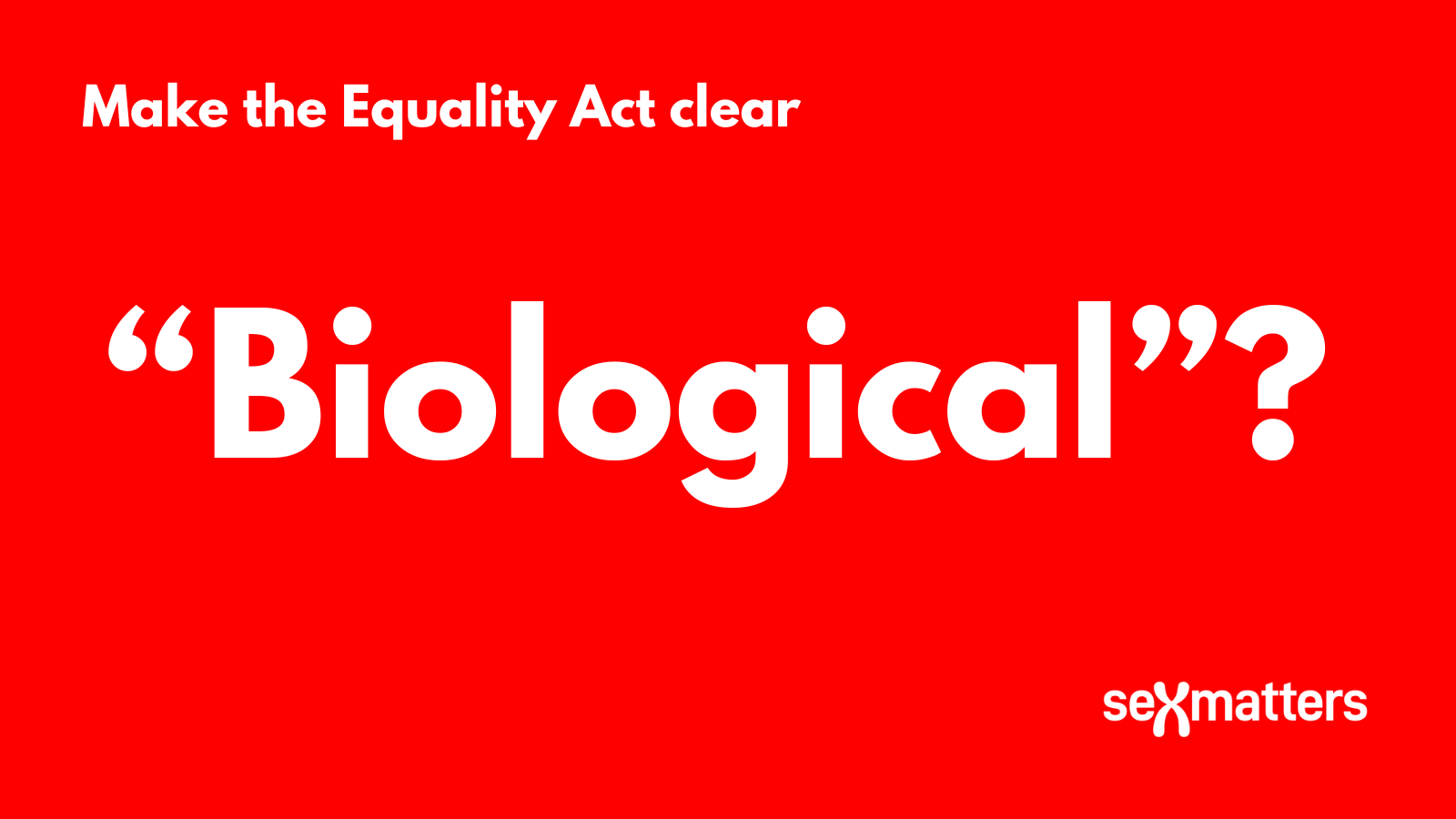Why we don’t want “biological” added before “sex” in the law

This is the first of a series of blog posts in the run up to the debate on 12th June about clarifying the Equality Act.
The word “sex” appears 268 times in the Equality Act 2010; “same sex” appears 48 times, “opposite sex” 28 times. Our petition says: Update the Equality Act to make clear that the characteristic “sex” is biological sex.
We used this shorthand because the petition imposes a character limit. But our proposal is not to insert “biological” in front of sex in the Equality Act (or in other laws). There is no need. Sex already means being male or female, and until very recently people only said “biological sex” to differentiate between sex as a category or as an activity (having sex).
But now the Equality Act needs to be clear about whether when it says “sex” it means a person’s actual sex, or whether that particular law recognises “sex” as modified by a gender-recognition certificate.
As Lord True said in the House of Lords on 23rd May 2022 these are the two options:
“When drafting a bill it is necessary to take into account the fact that a person may change their legal sex by obtaining a Gender Recognition Certificate. The effect of section 9 of the Gender Recognition Act 2004 is that a reference to a ‘woman’ in legislation, without more, will include someone who is a woman by virtue of a Certificate and will not include someone who is a man by virtue of a Certificate. In some cases, this might be the desired result but in others it might not.”
The clarification we are suggesting does not require a new definition of “biological” sex; the meaning of the term is already well established in common law. The underlying position at common law is that sex is biological and is fixed at birth based on chromosomal and physical characteristics – based on the cases of Corbett v Corbett [1970], Bellinger v Bellinger [2003] and Chief Constable of West Yorkshire Police v A (No 2) [2005].
The amendment we are proposing is clearest when set out in pictures: it seeks to clarify that the protected characteristic of being a woman includes everyone born female, however they identify and whether they have a gender-recognition certificate (GRC) or not, and the protected characteristic of being a man includes everyone born male however they identify and whether they have a GRC or not.

Our suggested wording is:
| (X) In this Act, references to female persons and women: (a) also refer to a person who was born female and has acquired the male sex under the GRA 2004 (b) do not refer to a person who was born male and has acquired the female sex under that Act. (X) In this Act, references to male persons and men: (a) also refer to a person who was born male and has acquired the female sex under the GRA 2004 (b) do not refer to a person who was born female and has acquired the male sex under that Act. |
In practice there may be other wording that would work for a clarifying amendment. It needs to be precise and concrete and understandable. And it needs be able to fit within the limits provided by S.23 of the Gender Recognition Act, which gives the power to modify other laws relating to sex using a statutory instrument. Ultimately the job of crafting the amendment would be done by the Office of Parliamentary Counsel, whose job it is to draft laws.
